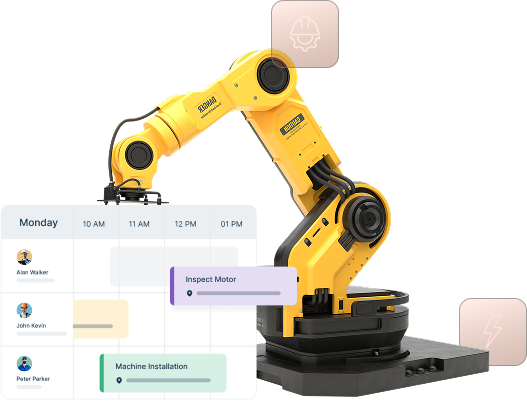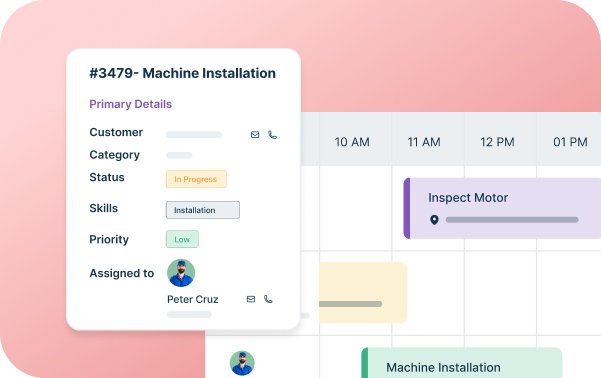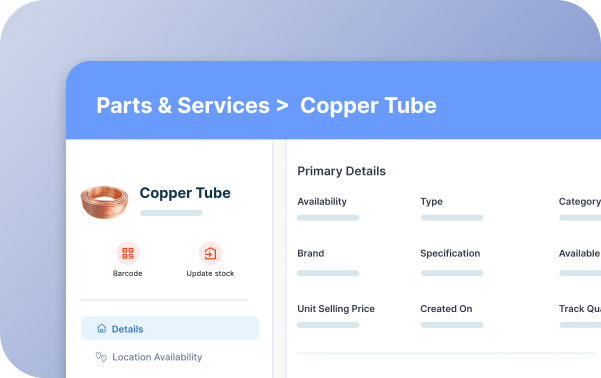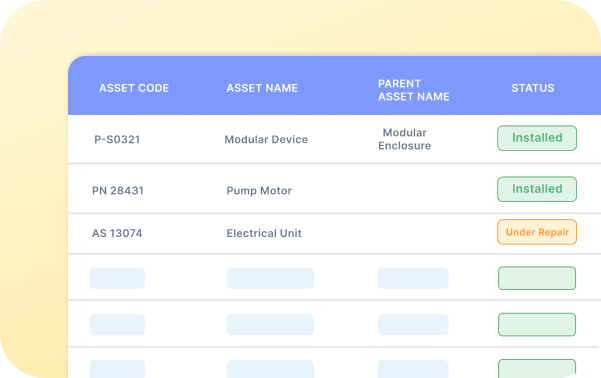Field service management software for manufacturers
Manage field service operations efficiently by optimizing scheduling, tracking assets, and equipping technicians with the right information and resources to meet SLAs and minimize downtime. Automate workflows to maintain lean, efficient, and responsive maintenance operations.

Maximize Asset Uptime with Intelligent Field Service
Reduce scheduling delays and improve efficiency
Get jobs done faster with intelligent scheduling that assigns the right technician based on expertise, job complexity, and location.

Keep parts in-stock with real-time inventory sync
Ensure technicians always have the right parts with real-time manufacturing inventory tracking, automatic restocking alerts, and seamless warehouse-to-field synchronization.

Streamline workflows for faster service completion
Keep jobs moving smoothly with automated checklists, digital documentation, and compliance tracking.

Track assets and service agreements with ease
Keep a complete record of installed assets, service contracts, and maintenance schedules in one place. Track asset lifecycles and automate preventive maintenance to minimize equipment downtime.

Keep customers informed every step of the way
Improve customer experience with instant service updates, automated reminders, and technician arrival notifications.

Empower customers with self-service options
Provide a customer portal for easy access to job history, service requests, and appointment tracking, reducing support calls and improving customer satisfaction.

Make informed decisions with real-time analytics
Get visibility into technician performance, job profitability, and key service metrics with real-time data and actionable insights.

See Zuper in Action
Take an interactive product tour to see how Zuper helps manufacturing businesses automate work order management, optimize technician dispatch, and ensure real-time asset tracking for seamless field operations.
Why Manufacturers Choose Zuper
Scalable and configurable to fit your business needs
Adapt Zuper to the demands of your manufacturing business, from large-scale equipment servicing to high-volume field service operations.
Faster time to value
Built for quick implementation, enabling teams to start with minimal training. Achieve measurable improvements in service efficiency and asset uptime faster than traditional field service solutions.
Seamless ERP and CRM integrations
Works with HubSpot, Zendesk, QuickBooks, Sage Intacct, Acumatica and 60+ tools, allowing for efficient data flow between operations.
Our Valued Customers













How a Stairlift Manufacturer Improved Their Operations
See how a leading stairlift manufacturer in North America upgraded their way of working. They switched from slow paper processes to a digital system that makes scheduling, work orders, and communication with customers much easier.
What Our Customers Say
With Zuper, we’ve transformed our field operations. Scheduling is seamless, inventory is tracked in real time, and our response times have improved significantly.
